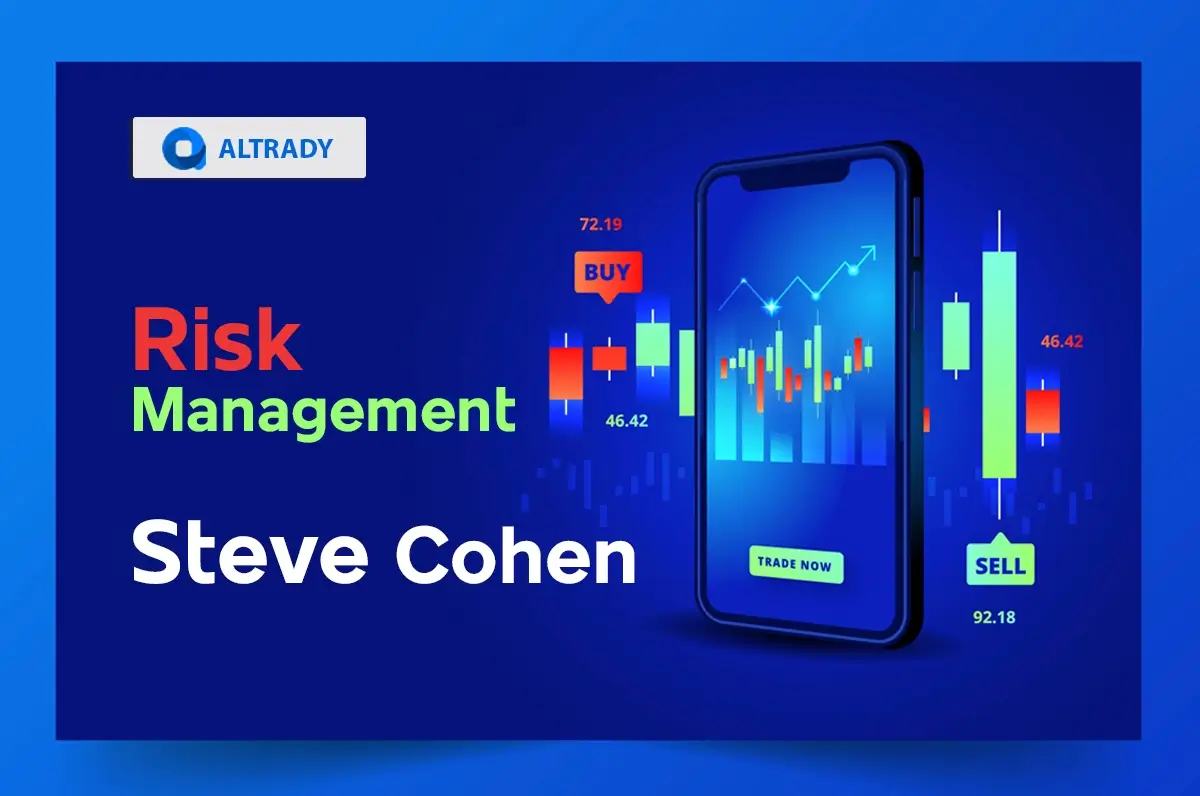Black Friday is loading…
Get 40% off with Altrady’s yearly plan and take the lead.
.svg)
.svg)
.svg)
.svg)
.svg)
.svg)
.svg)
.svg)
.svg)
.svg)
.svg)
.svg)
.svg)

Steve Cohen is a distinguished figure in the finance world, popular for his robust risk management and quantitative trading approach. Cryptocurrencies are assets that experience changes more often than not. A 60-40 portfolio is a trading method that aims to offset risks and balance returns ahead of macroeconomic changes and fundamental factors. How does all this relate to each other in modern times? And what is the role of Bitcoin in a 60-40 portfolio based on quant models? This article tries to answer these questions.

Building a 60-40 portfolio represents a trading approach through which investors allocate their capital across 60% safer instruments and 40% riskier financial products. Traditionally, investors would allocate capital between stocks and bonds, such as follows:
From the 60-40 idea, we can infer the risk management approach and potential for returns. The objective is to balance the growth associated with riskier instruments and the stability offered by those less riskier.
The performance of a 60-40 portfolio is highly correlated to fundamental factors like macroeconomic decisions on interest rates.
Typically, interest rates impact the prices and perception of financial assets from an investor standpoint who foresees to offset risks and harness higher returns.
Conventional investors perceive cryptocurrency assets as riskier instruments. Indeed, most of them are. However, something slightly different occurs with Bitcoin, and even a different perception is conveyed over Ethereum while rising projects like Solana are gaining protagonism.
The three mentioned crypto assets have something unique among other cryptos: investors claim exposure to them through ETF (exchange-traded products).
Bitcoin and Ethereum already have ETFs across different geographies. The most impactful is the spot ETF recently approved in the US. This ETF tracks the price of BTC, which means that investors directly invest in the performance of the asset even when they do not own a digital portion of it but a share of a fund.
A crucial distinction to keep in mind between Bitcoin and Ethereum concerning the perception that investors have when they desire to capitalize on such assets is all about the role of each asset.
While Bitcoin has a direct correlation to macroeconomic affairs, in a strict sense, as the S&P 500 has, Ethereum rides with more weight in its network utility and improvement factors.
Nowadays, Bitcoin has been playing a critical and intriguing role in the middle of a discussion as a riskier asset comparable to stocks or a store of value instrument like gold.
Central banks determine interest rates primarily based on how inflation evolves in an economy, among other elements. When inflation is high, some investors consider Bitcoin as a store of value.
On the other side, interest rate cuts and increases influence the risk appetite of investors who view BTC only as a risky asset with chances of higher returns.
This dynamic leads to risk-on and risk-off environments. Let's define each one:
Quantitative models are advanced approaches to rotating portfolios ahead of risk-on and risk-off changing environments.
With the discussion over interest rates and inflation capturing the public attention every day while causing sharp price movement in the market, automating trades to make rapid decisions and focusing on deep research to forecast future affairs pose the best procedure an investor could strive for nowadays to develop adaptable strategies over time.
Developing algorithms for a technological-driven market, as it is the cryptocurrency, where digital assets are constantly evolving, and there are new but riskier opportunities every day, could ease the adaptability curve of rotating strategies, and if quant traders and developers empower these algorithms through linear regression models based on machine learning, the ability to balance risks and returns is a precious advantage to consider.
Among the benefits of machine learning, we can point out the following:

Now, some concerns can emerge in front of such an innovative proposal. However, there is a figure that can help traders disperse, or at least diminish those concerns: Steve Cohen.
Steve Cohen precisely emphasizes building innovative portfolios through quant models with robust risk management. From him, we can spot some best practices to master the art of algorithmic trading.
These practices include:
60-40 portfolios are a traditional approach whose objective is to balance risk to achieve higher returns by holding assets that change their risk aversion over time, generally by macroeconomic affairs like interest rates. The relationship between Bitcoin as a technological development and its role in the modern finance system, trace a joining line within building 60-40 portfolios through innovative models like quantitative trading. Steve Cohen is the reference in this article to achieve such a goal while adopting the best practices regarding risk management.
In Altrady, investors and traders can manage portfolios and automate trades in a streamlined trading terminal for crypto and a specialized platform with a focus on algorithmic models. Sign Up for a free trial account today.